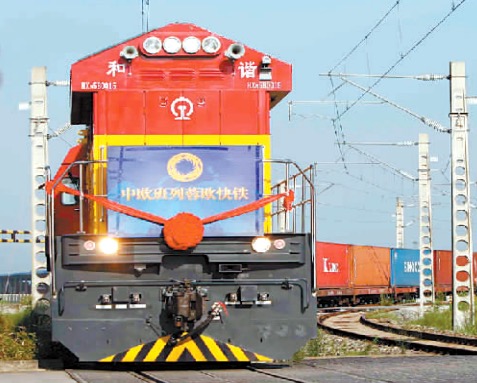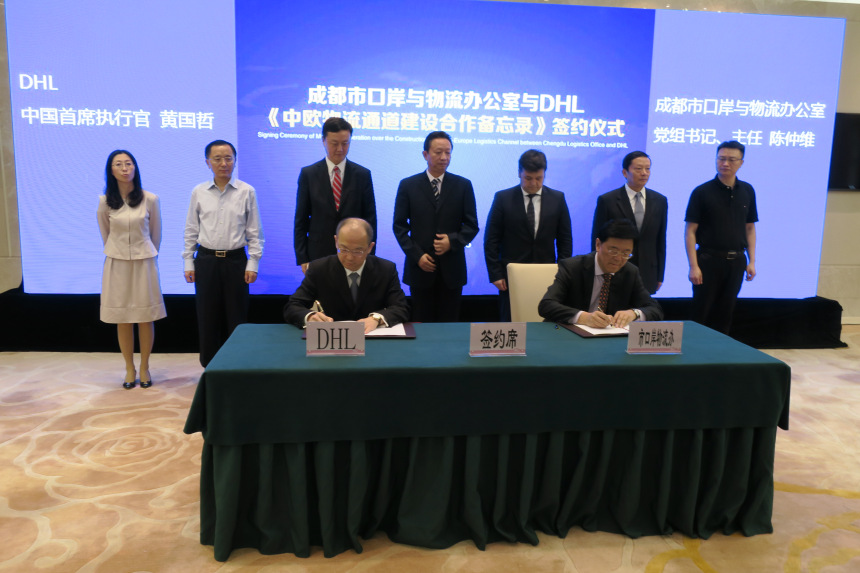
DHL Global Forwarding has signed a Memorandum of Understanding (MOU) on building the China-Europe logistics corridor with Chengdu Gateway Logistics Office, the government agency responsible for developing Chengdu into a major trade hub under China’s ‘Belt and Road’ initiative.

The MOU will see DHL Global Forwarding collaborate with Chengdu’s administration to further improve the security, customs efficiency, and freight capacity of the city’s logistics infrastructure. DHL will also gain greater access to Chengdu’s export trade lanes, allowing it to provide services to exporters in the city’s fast-growing free trade zones like the High Tech Zone and Tianfu New Area.
Some high-growth sectors like automotive production are expected to grow by more than 50 per cent within the next 10 years, with DHL’s specialist services in electronics and automotive logistics expected to receive particular focus from Chengdu’s industrial clusters.
With Asia’s largest railroad container transportation hub located in Chengdu, the city’s freight connections to Europe have undergone rapid renewal ahead of the Belt and Road initiative, including development of high-speed rail links like the Chengdu-Europe Express Rail between the city and Lodz, Poland in 2013; and the Chengdu-Central Asia Express Rail in 2014.
Positioned strategically along several Belt and Road routes including the Bangladesh-China-India-Myanmar (BCIM) economic corridor and the Yangtze River Economic Belt, Chengdu is the largest trade centre in Western China and ranks first among cities in western China in terms of foreign investment in commerce and trade.
“As one of the best-performing cities in China when it comes to economic growth, industrial strength, and overseas investment, Chengdu has immense potential to add value to the former South Silk Road’s revival,” said Steve Huang, CEO, DHL Global Forwarding China.
“In the next few months, we will also be working on bringing rail service from Chengdu to Turkey, furthering our rail development in the city since we first opened our West Corridor rail solution from Chengdu to Lodz three years ago. We look forward to making the most of the opportunities for growth and development in Chengdu.”
In line with the Belt and Road initiative, DHL has been fast developing solutions along the new Silk Road over recent years. Last year, DHL expanded the multimodal network to Taiwan, linking Taichung to the trans-Siberian North Corridor from Suzhou to Warsaw and added the westbound and eastbound services from Zhengzhou to Hamburg – in addition to the trans-Kazakh West Corridor rail service that originates from Chengdu to Lodz. In 2014, DHL introduced the first temperature-controlled China-Europe rail service on the same West Corridor, allowing temperature-sensitive products to be shipped year-round, regardless of the weather.









